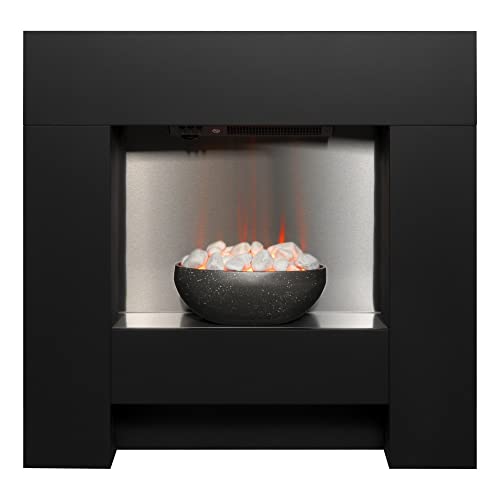This Is The History Of Fireplace In 10 Milestones
The Fireplace: A Warm Embrace of Tradition and Comfort
Fireplaces have actually been an important part of human habitation for centuries, serving as a source of heat, a meeting place, and a symbol of comfort. While Check This Out might vary extremely from their ancient forefathers, the attraction of a fireplace sustains. This article checks out the numerous elements of fireplaces, including their history, function, types, and maintenance, while also attending to regularly asked questions.
The Evolution of Fireplaces
Fireplaces go back to ancient times when open flames were utilized for cooking, heating, and defense from wildlife. Over the centuries, fireplaces developed from simple fire pits to the sophisticated performances we see today. Here is a short timeline of their evolution:
- Prehistoric Era: Cavemen used open flames for warmth and cooking. Wind and smoke frequently blew into homes.
- Middle Ages: Stone and brick fireplaces ended up being typical in homes and castles, integrating chimneys to carry smoke outside.
- Renaissance: Elaborately designed mantels emerged, and fireplaces ended up being centers of social interaction.
- Industrial Revolution: Innovations in heating products caused a variety of styles and functionalities.
- Modern Era: The arrival of gas, electric, and bioethanol fireplaces offered cleaner alternatives to traditional wood-burning systems.
Table 1: The Evolution of Fireplaces
Age
Attributes
Ancient Era
Open flames for warmth and cooking
Middle Ages
Stone and brick structures with early chimneys
Renaissance
Ornate mantels, social centers
Industrial Revolution
Varied styles, advent of brand-new materials
Modern Era
Gas, electric, and bioethanol alternatives
The Purpose of a Fireplace
Fireplaces serve double purposes: they supply physical heat and produce an emotional environment. Property owners often gather around the fireplace to bond, share stories, and enjoy a cozy setting. The glow of a fire can be soothing, adding to a sense of relaxation and intimacy. Beyond personal pleasure, fireplaces also provide practical benefits, including:
- Home Heating: Effective heat source, specifically in colder climates.
- Increased Home Value: A properly designed fireplace can improve the visual worth of a home.
- Emergency Heating: In case of power outages, wood-burning fireplaces can function as a vital heat source.
- Visual Appeal: A focal point that contributes to interior decoration.
Types of Fireplaces
Today, fireplaces can be found in various styles and fuel types, accommodating a diverse series of preferences and settings. Here are some typical types:
Wood-Burning Fireplaces:
- Traditional fire pits
- Classic masonry fireplaces
- Require considerable upkeep and chimney upkeep
Gas Fireplaces:
- Available in both direct vent and ventless ranges
- Simpler to use and preserve than wood-burning fireplaces
- Supply instantaneous heat with a flick of a switch
Electric Fireplaces:
- Offer associated heat sources without genuine flames
- Often developed to simulate traditional fireplaces
- Ideal for smaller areas and homes without a chimney
Bioethanol Fireplaces:
- Use bioethanol fuel, providing a sustainable option
- Need no ventilation and can be placed anywhere
- Safe and simple to maintain
Table 2: Types of Fireplaces
Type
Fuel Source
Functions
Maintenance Requirements
Wood-Burning
Wood
High ambiance, heat source
Regular chimney cleaning
Gas
Natural gas or lp
Instant heat
Minimal, occasional servicing
Electric
Electrical energy
Easy setup
Extremely low upkeep
Bioethanol
Bioethanol fuel
Ventless, portable
Low, mainly cleaning
Maintenance and Safety Considerations
Owning a fireplace involves specific duties, especially concerning its safe operation and long-term upkeep. Here are necessary maintenance ideas and safety standards:
Maintenance Tips:
- Annual Inspection: Always have your chimney and fireplace examined a minimum of as soon as a year by a certified service technician.
- Regular Cleaning: Clean out ashes and debris after each use, and guarantee the flue is open before starting a fire.
- Look for Cracks: Inspect masonry for cracks or damage to avoid structural concerns.
- Use Proper Fuel: Only usage dry, experienced wood for wood-burning fireplaces; do not burn treated wood.
Security Guidelines:
- Install Smoke Detectors: Ensure smoke alarm are practical, evaluating them regular monthly and changing batteries as needed.
- Keep a Fire Extinguisher: Have one neighboring, even if a fireplace is used infrequently.
- Supervise Flames: Never leave a fire unattended, and ensure kids and family pets are kept an eye on around the fireplace.
Regularly Asked Questions (FAQs)
1. How can I decrease smoke from a wood-burning fireplace?
To decrease smoke, use dry, skilled wood, and ensure that your chimney is tidy and unblocked.
2. Is it safe to use gas fireplaces throughout a gas leakage?
Never use a gas fireplace during a gas leak. Immediately evacuate the location and contact gas services for help.
3. Can I install an electric fireplace myself?
Electric fireplaces are typically easy to install, but it is recommended to talk to experts to ensure security and compliance with local building regulations.
4. What is the best type of fireplace for small spaces?
Electric fireplaces or bioethanol models are frequently best for small areas, as they do not need substantial ventilation or structural adjustments.
Fireplaces have actually transcended their initial purpose of providing heat to become cherished components of home style and domesticity. They stimulate memories of warmth, events, and togetherness while supplying functional advantages that enhance modern living. By understanding the different types of fireplaces, their upkeep, and safety practices, property owners can take pleasure in the ageless appeal of this precious feature for generations to come.
